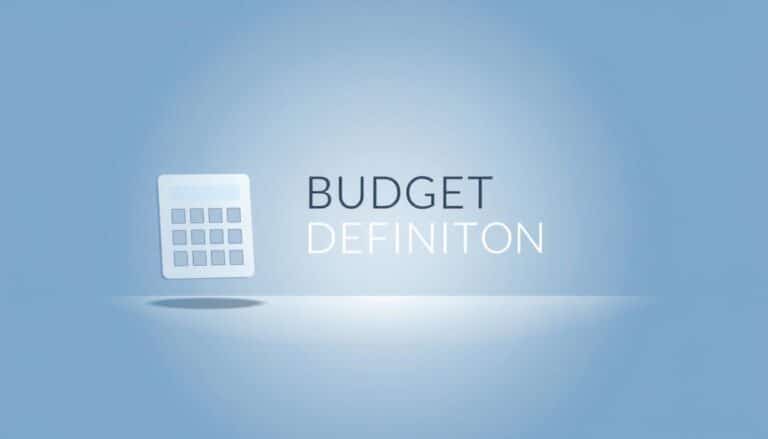Planning for the future can seem scary, but it’s key to a comfy life after work. Retirement is a big life event that needs thought and prep.
A retirement planning guide helps people of all ages see why starting early is important. It’s never too early or too late to plan for retirement. Knowing the process well can really help.
Key Takeaways
- Understanding the importance of retirement planning
- Starting early to secure a comfortable retirement
- Having a clear plan in place
- Considering various retirement options
- Reviewing and adjusting plans regularly
Understanding Retirement Planning
Related content:
You will stay on the same website.
Retirement planning is key to a secure financial future. It’s about managing your money well to enjoy a comfortable retirement.
Definition and Importance
Retirement planning means figuring out how much money you’ll need in retirement. Then, you make a plan to get there. It’s vital because it lets you keep living well even when you’re not working.
A good retirement strategy helps avoid financial risks. It makes sure you have enough retirement savings for the future.
Retirement planning is very important. It brings financial security, less stress, and peace of mind in retirement.
Key Goals of Retirement Planning
The main goals are to save enough, manage investments, and have a steady income in retirement. You should aim for a mix of investments that fit your risk level and goals.
Other goals include lowering taxes, handling healthcare costs, and keeping a good lifestyle in retirement. By setting clear goals and a custom retirement strategy, you can handle retirement planning better.
Why Start Retirement Planning Early?
Starting retirement planning early is key to financial security. It’s a smart move that lets you prepare for the future. This way, you can enjoy retirement without worrying about money.
Compounding Interest Benefits
One big plus of early retirement planning is compounding interest. Saving early means your money grows more. Even small, regular savings can grow a lot over time.
For instance, saving $100 a month from age 25 adds up to $48,000 by age 65. But with a 5% annual return, that could grow to over $150,000. This shows how powerful long-term investing is, and why starting early matters.
Financial Security for Future Generations
Early retirement planning also secures your future and helps future generations. A big retirement fund can leave a legacy for your kids or grandkids. It can help them reach their dreams or offer financial support.
To get the most from early retirement planning, here are some retirement planning tips:
- Start saving as early as possible.
- Use retirement options like 401(k) plans or IRAs.
- Keep reviewing and tweaking your retirement plan.
By using these tips and understanding early planning’s benefits, you can secure a better financial future for yourself and your family.
Common Misconceptions About Retirement
Many people think retirement planning is only for older adults. But it’s more than saving money. It’s about securing your financial future. Knowing the truth about retirement planning is key for everyone.
It’s Only for Older Adults
One big myth is that retirement planning is only for the elderly. But starting early is better. It’s not just about saving; it’s about smart investing and finance management.
Social Security Will Cover Everything
Many believe Social Security will cover all their retirement costs. But it’s not enough alone. A good plan includes personal savings, investments, and other income sources.
Here’s a table showing the gap in retirement funding:
| Source of Income | Monthly Amount | Annual Amount |
|---|---|---|
| Social Security | $1,500 | $18,000 |
| Personal Savings | $500 | $6,000 |
| Pension/Other | $1,000 | $12,000 |
| Total | $3,000 | $36,000 |
In conclusion, retirement planning is complex and needs a full approach. By tackling common myths, you can prepare for a secure future. Start early and look at all income sources.
Assessing Retirement Needs
To plan for retirement, you must first understand your financial needs. This step is key to making a retirement plan that fits your goals and keeps you financially stable.
Evaluating Current Financial Situation
Start by looking at your current finances. Count all your assets, like savings, investments, and retirement accounts. Also, think about your current bills, debts, and other money matters.
This helps you see what you’ll need in the future more clearly.
Estimating Future Expenses
Next, figure out what you’ll spend in retirement. Think about housing, healthcare, travel, and other costs you’ll have then.
A retirement calculator can help. It gives a better guess based on things like inflation and how well your investments might do.
Getting a good handle on your retirement needs is crucial. It’s not just about your current money situation and future costs. It’s also about keeping your plan up to date as your life and finances change.
Retirement Savings Options
Retirement savings are key to a secure financial future. There are many options to explore. Knowing these can help you plan for retirement wisely.
401(k) Plans
A 401(k) plan is a common choice for retirement savings. It lets employees put part of their salary into a retirement account before taxes.
- Key Benefits: High contribution limits, employer matching, and tax-deferred growth.
- Considerations: Fewer investment choices, and early withdrawal penalties.
Individual Retirement Accounts (IRAs)
IRAs are a great way to add to your retirement savings. They can be used alongside 401(k) plans.
- Types of IRAs: Traditional and Roth IRAs, each with unique rules and benefits.
- Benefits: More investment freedom and often lower fees than 401(k) plans.
Roth vs. Traditional Accounts
Choosing between Roth and traditional accounts involves understanding taxes.
| Account Type | Tax Treatment | Withdrawal Rules |
|---|---|---|
| Traditional | Contributions are tax-deductible | Withdrawals are taxed as ordinary income |
| Roth | Contributions are made with after-tax dollars | Qualified withdrawals are tax-free |
The right choice between Roth and traditional accounts depends on your situation and tax strategy.
The Role of Investments in Retirement
Retirement planning is more than just saving money. It’s about investing wisely to keep your finances stable. A good retirement strategy means making smart investment choices to grow your savings.
Stock Market vs. Bonds
When thinking about retirement investments, you have two main choices: the stock market and bonds. The stock market might offer higher returns over time but comes with more risk. Bonds, on the other hand, provide a stable return but with lower yields.
As you get closer to retirement, it’s wise to move to safer investments to protect your savings. But avoiding the stock market might mean missing out on growth. A smart move is to balance your investments with both stocks and bonds.
Diversifying Investment Portfolio
Diversification is key in investing. By spreading your investments across different types, like stocks, bonds, and real estate, you can lower your risk. A diversified portfolio helps keep your retirement savings steady, even when markets change.
For those nearing retirement, diversifying is essential. It helps manage risk and can increase your returns. Getting advice from a financial advisor can offer tailored retirement planning tips based on your needs and goals.
Social Security Benefits Explained
Understanding Social Security benefits is key to planning for retirement. It provides a solid base for retirement income. This helps ensure retirees have financial stability.
Eligibility and Application Process
To get Social Security benefits, you need to have worked and earned 40 credits. This is about 10 years of work. You can apply online, by phone, or in person at a local office.
It’s important to apply on time. The processing time can vary.
Key factors to consider during the application process include:
- Having necessary documents such as proof of age, citizenship, and income records.
- Understanding the different types of benefits available, such as retirement, disability, or survivor benefits.
- Being aware of the potential for delays in processing and planning for them.
Benefits Calculation
Social Security benefits are based on your earnings history. They look at your 35 highest-earning years, adjusted for inflation. The Social Security Administration uses a formula to find your Primary Insurance Amount (PIA).
The calculation involves several steps:
- Adjusting earnings for inflation to find your average indexed monthly earnings (AIME).
- Applying a formula to the AIME to calculate the PIA.
- Adjusting the PIA based on when you choose to start receiving benefits.
The Social Security Administration says, “The amount you receive is based on your earnings record, so the more you earn, the higher your benefit will be.” This shows why Social Security is important in retirement planning.
“Social Security is a critical component of retirement income for many Americans, providing a guaranteed income stream that is not dependent on the performance of the stock market or other investments.”
Creating a Retirement Savings Plan
Creating a personalized retirement savings plan is key to reaching your retirement dreams. It means looking at your finances, figuring out what you need for retirement, and making a plan to get there.
Setting Realistic Savings Goals
Starting with realistic savings goals is crucial. First, check your current financial health. Look at your income, expenses, debts, and savings. Using retirement calculators or talking to a financial advisor can help figure out how much you need to save.
Understanding compounding interest is also important. Even small, regular savings can grow a lot over time. For example, saving $100 more each month from age 30 can add up to a lot by retirement, thanks to compounding.
| Age Started Saving | Monthly Savings | Total Savings at 65 |
|---|---|---|
| 30 | $200 | $500,000 |
| 40 | $300 | $300,000 |
| 50 | $400 | $150,000 |
Regularly Reviewing and Adjusting the Plan
A retirement savings plan needs regular checks and updates. Life changes like income shifts, marriage, or kids can affect your savings goals. Regular reviews keep your plan on track with your retirement dreams.
Also, adjust your investment strategy as you get closer to retirement. You might move from riskier to safer investments to protect your money. Diversification helps manage risk and ensures a steady income in retirement.

By sticking to these steps and being disciplined with retirement savings, you can build a strong plan. This plan will support your financial security for years to come.
Factors Affecting Retirement Planning
To have a comfortable retirement, you need to think about several key things. These include the economy and your health. Both play big roles in planning for retirement.
Inflation and Its Impact
Inflation is a big deal because it can make your retirement savings worth less over time. As prices go up, your money doesn’t go as far. This means you can buy fewer things with the same amount of money.
Understanding Inflation’s Impact
- Inflation makes fixed incomes less valuable.
- It also makes healthcare and other important costs higher.
- Investments that keep up with inflation can help fight its effects.
For example, if you make $50,000 a year, inflation can make it worth less. To fight this, think about investing in things like stocks or real estate. They often do well when prices are rising.
Healthcare Costs in Retirement
Healthcare costs are another big thing to think about when planning for retirement. As you get older, these costs usually go up. This can put a lot of pressure on your retirement money.
| Healthcare Cost Category | Average Annual Cost |
|---|---|
| Medicare Premiums | $1,500 |
| Out-of-Pocket Expenses | $2,000 |
| Long-term Care | $5,000+ |
When planning for healthcare, think about Medicare, extra insurance, and long-term care costs. It’s also smart to stay healthy to avoid expensive health problems.
By understanding and planning for these things, you can get ready for retirement better. This way, you can have a more secure financial future.
The Importance of Debt Management
Managing debt is key to a secure retirement. As people get closer to retirement, their finances can be greatly affected by debts. Good debt management lets retirees enjoy their years without money worries.
Paying Off Debts Before Retirement
Clearing debts before retirement is vital in retirement strategy. It cuts down on financial stress and opens up more money for fun and living costs. Focus on high-interest debts like credit card balances. Look into debt consolidation or balance transfers.
For instance, if you have a high-interest credit card, moving the balance to a lower-interest card can help. This makes payments easier and saves on interest costs.
Managing Mortgage and Other Obligations
Handling mortgage and other debts is crucial in retirement income planning. For many, the mortgage is the biggest expense. Downsizing or exploring reverse mortgages can help manage this cost.
A reverse mortgage lets homeowners use their home’s equity for cash. This can help pay off the mortgage or boost retirement income. But, it’s important to understand the complex terms and implications of reverse mortgages.
| Debt Type | Pre-Retirement Strategy | Retirement Consideration |
|---|---|---|
| High-Interest Credit Cards | Pay off or consolidate | Minimize new credit card debt |
| Mortgage | Pay down principal | Consider downsizing or reverse mortgage |
| Personal Loans | Pay off high-interest loans | Refinance if possible |
In conclusion, managing debt well is essential for a good retirement strategy. By clearing debts before retirement and handling mortgage and other debts, people can greatly improve their financial security. This leads to a more enjoyable retirement.
Tax Considerations during Retirement
Taxes are a big part of retirement planning. They affect how much of your savings you keep. Knowing about taxes on retirement income is key to saving more.
Understanding Taxable Income
In retirement, many income sources are taxed. This includes pensions, 401(k) or IRA distributions, and sometimes Social Security. Knowing which income sources are taxed is crucial for managing taxes.
Withdrawals from traditional retirement accounts are taxed. But, Roth IRA withdrawals are usually tax-free if you meet certain conditions. Planning for these tax rules can reduce your tax burden in retirement.
Tax-Advantaged Accounts
Using tax-advantaged accounts can lower taxes in retirement. Accounts like Roth IRAs and Health Savings Accounts (HSAs) offer tax benefits. This helps your savings grow more efficiently.
For example, traditional IRA contributions might be tax-deductible. This lowers your taxable income for the year you contribute. Also, investment gains in these accounts grow tax-free until you withdraw them.
Incorporating Lifestyle Choices
Lifestyle choices are key in retirement planning. They affect both your money and happiness. As you retire, think about how your daily choices will shape your future.
Travel and Leisure Activities
Travel and hobbies are big parts of retirement. Many dream of exploring new places or spending time with loved ones. But, these activities need a budget to last throughout retirement.
Travel costs can change a lot based on where you go and how you get there. It’s smart to set aside money for these activities in your retirement plan. You might want to save a certain percentage of your income for fun.
| Activity | Average Annual Cost | Potential Savings Tips |
|---|---|---|
| Travel | $5,000 | Consider off-season travel or budget accommodations. |
| Hobbies | $2,000 | Explore free or low-cost hobbies in your local community. |
| Dining Out | $3,000 | Limit dining out to special occasions or happy hour deals. |
Housing Decisions and Downsizing
Choosing where to live is also important in retirement. As you get older, your living needs might change. Downsizing can save money and free up equity in your home.
But, downsizing is a big decision. Think about what you want, your health, and how it will affect your life. Some might want to stay in their current home for sentimental reasons.
- Compare the costs of your current home and a downsized one.
- Think about how downsizing could help with money in retirement.
- Consider how downsizing might change your life, like being closer to family.
By thinking about your lifestyle, including travel, hobbies, and where you live, you can plan a retirement that’s both affordable and enjoyable.
Planning for Healthcare in Retirement
Planning for retirement means knowing about healthcare costs and choices. As people get older, healthcare costs rise. It’s key to plan for these expenses.
Medicare and Supplement Insurance
Understanding Medicare and supplement insurance is crucial. Medicare is a federal program for those 65 and older, and some younger people with disabilities. Supplement insurance, or Medigap, covers costs like deductibles and copayments.
It’s important to look at Medicare’s parts (A, B, C, and D) and pick the right supplement plan for you.
Long-term Care Considerations
Long-term care is also key in retirement planning. Long-term care insurance can pay for assisted living, nursing home care, and in-home care. These costs aren’t usually covered by Medicare.
When thinking about long-term care, consider your finances, health, and family history. This helps figure out what care you might need later.
Knowing about these healthcare options helps retirees plan their retirement income planning better. This way, they can have a more secure retirement financially.
Retirement Planning for Couples
Planning for retirement together is more than just saving money. It’s about making sure their financial futures match. Couples need to think about their shared goals, their money situation, and what they want their retirement to be like.
Coordinating Plans and Goals
It’s key for couples to align their retirement plans and goals. They need to look at their total money, figure out what they’ll need in retirement, and make a plan together. They should think about when they want to retire, how much they’ll spend, and where their money will come from.
To work well together, couples can take these steps:
- Look at their money situation together.
- Talk and agree on what they want for retirement.
- Make a budget for retirement expenses together.
- Check and tweak their retirement savings plans.
By teaming up, couples can make sure their retirement plans fit together. They’ll both be working towards the same goals.
Communication About Finances
Talking openly about money is crucial for couples planning for retirement. They should discuss their money worries, what they expect, and who will handle what. It’s important to understand each other’s views and make decisions together.
“Financial peace isn’t the acquisition of stuff. It’s living below your means on purpose.” – Dave Ramsey
Regular money talks can help couples stay on track. They can check their progress, talk about any issues, and make changes if needed. This keeps trust strong and makes sure they’re both on the same page with retirement planning.
| Aspect | Individual Planning | Joint Planning |
|---|---|---|
| Financial Goals | May have different priorities | Aligned goals for retirement |
| Budgeting | Separate budgets | Combined budget for retirement |
| Decision Making | Individual decisions | Collaborative decision-making |
By planning together, couples can build a more secure and enjoyable retirement. It’s not just about matching their financial plans. It’s also about keeping the lines of communication open about their money goals and expectations.
Tools and Resources for Retirement Planning
As people get closer to retirement, finding good planning tools and expert advice is key.
Planning for retirement is complex. It involves looking at many financial factors and making smart choices. The right tools and resources can make this easier.
Financial Planning Software
Financial planning software helps create a detailed retirement plan. It has features like retirement calculators, investment tracking, and budgeting.
Key Features of Financial Planning Software:
- Retirement savings projections
- Investment analysis
- Expense tracking
Professional Financial Advisors
Professional financial advisors give personalized advice on retirement planning. They help create plans that fit your unique financial situation and goals.
Benefits of Consulting a Financial Advisor:
- Customized retirement plans
- Expert investment advice
- Assistance with tax planning
Let’s look at how different retirement planning software compares:
| Software | Key Features | Cost |
|---|---|---|
| Personal Capital | Investment tracking, retirement planning | Free |
| Quicken | Budgeting, expense tracking | $3.99/month |
| eMoney | Comprehensive financial planning | $120/year |
Using these tools and resources can help you make better choices. This way, you can secure a brighter financial future.
The Emotional Aspect of Retirement Planning
Retirement planning is more than just about money. It’s also about getting ready for the emotional changes that come with it. Knowing what retirement planning includes, including its emotional side, helps people deal with this big change.
Managing Expectations and Stress
A good retirement planning guide can help reduce stress by setting clear goals. It helps you imagine your retirement life, including travel, hobbies, and social activities. This ensures a happy post-work life.
Preparing for Life Changes
Retirement means big changes, like moving from a regular work schedule to more free time. Getting ready for these changes emotionally makes the transition easier. It lets retirees enjoy their new freedom.
By focusing on both the financial and emotional sides of retirement, people can make a complete retirement plan. This plan supports their overall happiness. A detailed retirement planning guide offers the tools and knowledge needed to handle this complex journey.



